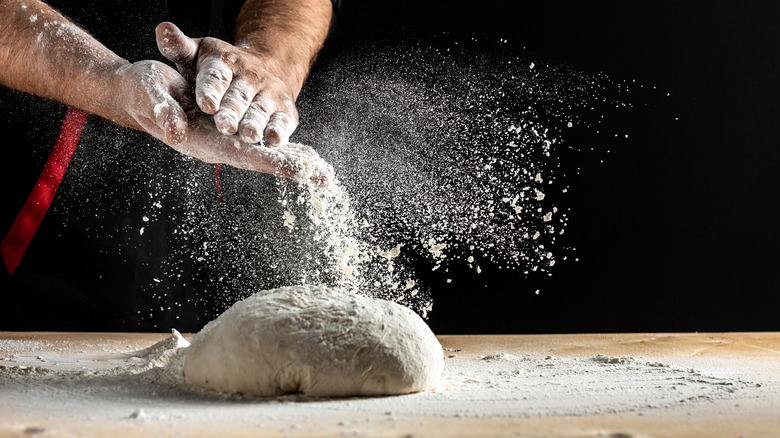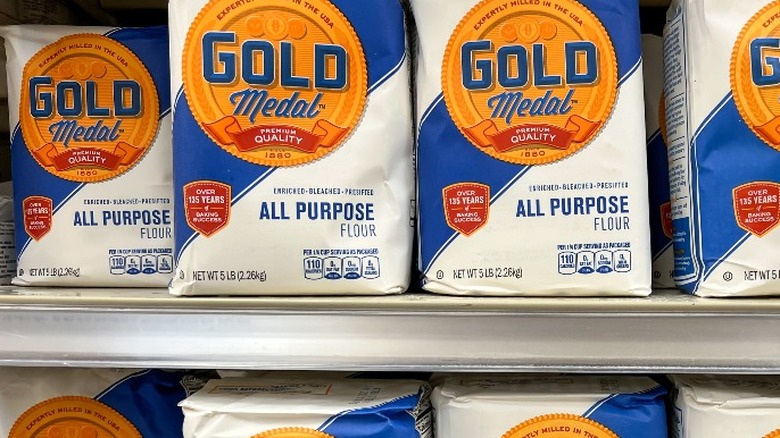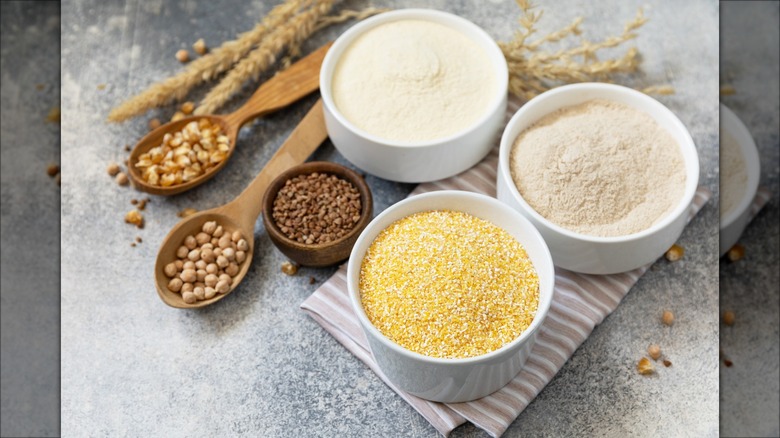How To Tell If Flour Has Gone Bad
An avid baker might move through bags of flour quickly — but if you're an occasional baker, you may find that a single bag of flour sits in your pantry for months on end. And while flour might be considered more of a non-perishable item than one with a much more limited time frame before its expiration date, flour can still spoil. Before you dive headfirst into a recipe, inspect your flour to see if it's still a viable ingredient. A number of factors can speed up the spoiling process for your flour — and using spoiled flour is one of the biggest mistakes everyone makes.
Per Healthline, the shelf life of flour differs based on the ingredients used to make it. White, all-purpose flour lasts longer than whole wheat flour, for example, because it's more highly processed. When it comes to wheat flour, however, CNET pointed out that it only lasts approximately 6 months once it's opened. And unlike either wheat flour or all-purpose flour, gluten-free alternatives — like almond flour and coconut flour, among others — can potentially expire more quickly than their non-gluten-free counterparts due to higher oil and moisture content.
Don't trust the expiration date on a bag of flour
If you're pulling your bag of flour down from the shelf for the first time in months, it's a good idea to check the expiration date and do a sniff test to see if the flour has expired. Per Healthline, all-purpose flour can survive six to eight months at a cool temperature in your pantry. You can keep it for up to a year in the refrigerator, and up to two years in the freezer.
Flour bought and sold at your typical grocery store has an expiration date printed on the bag — but this date isn't necessarily accurate, according to Healthline. Flour may be safe to eat well after the printed date, but factors like how it's stored and whether it has been exposed to moisture can also lead flour to spoil before the date printed on the package.
As Healthline noted in their guide to expired flour, your best tool for determining if your flour is still safe to eat is your nose. If you take a whiff and make a face — i.e., if you detect an unpleasant odor — you probably need to buy a fresh bag. But sometimes, the difference in scent can be subtle enough to make you question whether it's worth a trip to the store. If that's the case, checking the color of your flour can also be helpful: If it's slightly discolored, it's a good indicator that it's not safe to use.
Preserving your flour
If you want to avoid dealing with expired flour, then you're in luck, because there are some surefire ways to extend a bag of flour's shelf life. According to Women's Health, Some bakers opt to keep their flour in the fridge to make it last longer, but if you elect to go this route, be sure it stays clear of moisture because it can cause mold. Pay attention to any potential sources of moisture on the shelves as well.
Another catalyst for spoiled flour is the weevil, or flour beetle, according to the pest extermination company Orkin. These tiny bugs find their way into bags of flour that get left open. They feed on the flour, lay eggs, and begin a cycle of eating and reproducing. If your flour has been sitting on the shelf for a while, be sure to run it through a sifter or inspect it thoroughly for bugs. The best way to prevent the infiltration of insects and moisture is to keep your flour sealed. (And luckily, it's not dangerous even if you eat flour with weevils.)
If you do end up cooking with expired flour, you will probably notice a difference in taste. Flour with a musty scent will likely create a finished product with a musty taste, per Women's Health. But there really aren't really health concerns associated with people who eat flour that's expired.


